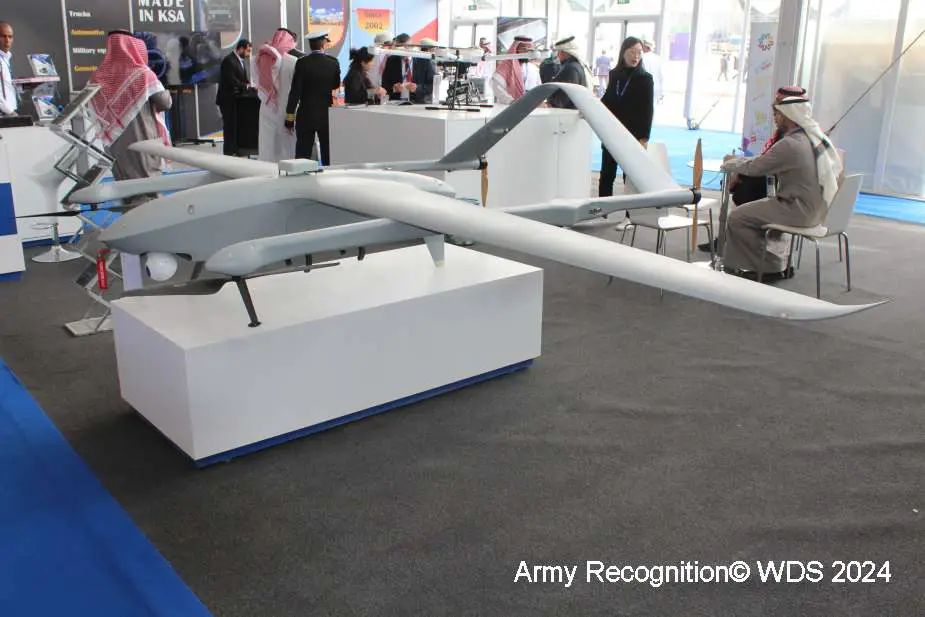Strengthening China's drone capabilities with Loong 5 UAV at WDS 2024
LOONGUAV, a Chinese company, is showcasing its Loong 5 UAV as a medium-sized drone with a notable payload capacity and extended flight duration, marking its place in the contemporary landscape of unmanned aerial vehicles. This drone's design and operational use reflect the broader trend of increasing drone utilization in conflict scenarios, transitioning from reconnaissance to offensive roles.
Follow Army Recognition on Google News at this link

The Loong 5 UAV displayed by LOONGUAV at WDS 2024 (Picture source: Army Recognition)
The Loong 5, characterized by its dual-tail design, is engineered for enhanced stability and efficiency in flight. It supports a maximum payload of 20 kg and can fly for up to 180 minutes, leveraging two independent power systems during cruise flight for increased reliability. The drone measures 2580 mm in length with a wingspan of 4800 mm, and an empty weight of 20 kg, reaching a maximum takeoff weight of 55 kg. Flight performance metrics include a cruising speed of 26 m/s, a maximum horizontal speed of 40 m/s, and ascent and descent speeds of 3 m/s and 2.5 m/s, respectively. It can operate at altitudes up to 4500 m and has a transmission range of 80 km, thanks to a comprehensive GNSS system that includes GPS, GLONASS, BeiDou, and Galileo.
Designed to withstand challenging conditions, the Loong 5 has a wind resistance of level 7 and an IP54 protection rating, suitable for temperatures ranging from -20 to 60°C. The drone is packaged in two separate boxes for the fuselage and tail, weighing 92 kg and 39 kg, respectively, to ensure safe transportation. The Loong 5's advanced features, such as quick disassembly, various target positioning methods, and vertical takeoff and landing (VTOL) capabilities, underscore its adaptability.
Drones like the Loong 5 have evolved significantly over recent decades, initially used for reconnaissance and surveillance due to their ability to deliver real-time intelligence without risking pilot lives.
Over time, their role has expanded to offensive operations, including target designation, electronic jamming, and direct strikes, facilitated by the integration of weapon systems. Drones have become a preferred tool in modern warfare for their ability to operate in hostile environments, precision, reduced risk to human forces, cost-effectiveness, and operational flexibility, capable of executing a wide range of missions from stealth surveillance to preemptive strikes on strategic enemy targets.
Defense News February 2024
- Hits: 3150
















